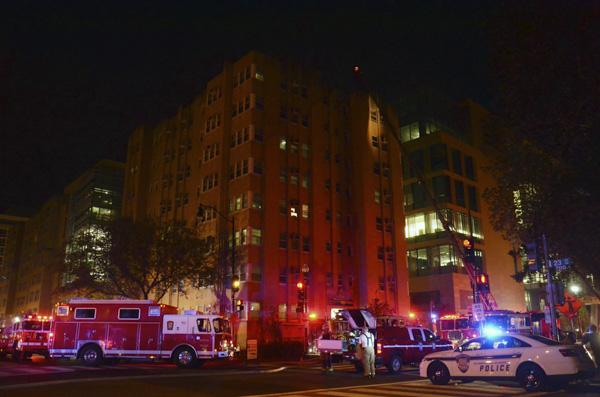The fire on the roof of Fulbright Hall last September cost the University $21,000, according to data released this month in the annual security report.
The fire in Fulbright Hall cost the University significantly more than any of the other fires in residence halls last year, with damages from the other fires usually costing GW about $100. One fire restoration expert said the number is low, considering the possible damages from a fire in a large residence hall.
Senior Associate Vice President for Safety and Security Darrell Darnell said the University hired an outside contractor to refurbish the residence hall’s roof “as part of normal repair operations.” The roof was closed for the winter and reopened last spring as part of the regular schedule.
Darnell declined to give the specific damages that added up to the $21,000, citing a University policy to not detail the specific damages from a fire.
“We do not break down the line-item costs for damages,” he said. “The University takes fire safety seriously and has established fire safety programs for students living in on-campus residence halls.”
He added that GW’s multi-floor residence halls, like Fulbright Hall, are built with stone or bricks that are more fire-resistant than other residential buildings that are made with wood and drywall. All residence halls have automatic fire detection, alarm and sprinkler systems, and sprinklers are in all common rooms and lobbies, but some buildings have them in individual rooms, he said.
He added that all residence halls have fire extinguishers throughout the building that follow the National Fire Protection Safety Standards and the D.C. code.
Five months after the original fire on the roof, emergency agencies responded to another fire on the fifth floor of the building in February. Both fires in Fulbright were caused by students carelessly throwing cigarettes into the trash cans, causing the trash to ignite on fire, Darnell said last year.
Chris Coffin, the director of production at ServiceMaster Restore of Alexandria, said he was not surprised by the amount of damage from a roof fire. He said that the price of each fire’s damages depends on the extent of the damage.
“Twenty-one thousand dollars is not a considerable loss,” he said.
Coffin said water damage, mold problems and replacing unsalvageable structures go into the prices that building owners have to pay after a fire. Although the fire occurred on the building’s roof, the sprinklers went off on the top floors of the building, which needed to be assessed for water damage after the fire.
“Having an older building will often increase the cost of repair,” he added.
Coffin added that even though there were no exterior methods of immediate fire prevention, the interior sprinklers may have caused the type of water damage that could lead to mold and other costly expenses.
“It prevents loss of life, which is the overarching concern, but it results in the damage of personal property,” he said.








